Ecological Genetics
Genetic diversity is a fundamental prerequisite for the adaptability of tree populations, the long-term ecological stability of our forests as habitats, and thus also a condition for their sustainable use. In the field of Ecological Genetics, we investigate how natural and human influences affect the genetic composition of our forests.
With our intergenerational approach, we analyze the reproductive behavior of tree species in case studies and in genetic monitoring (GenMon) and thus how their genetic diversity is transferred to the offspring generation. For this purpose, we use neutral genetic markers (SSRs, SNPs, genotyping by sequencing) to analyze large samples. Starting from dominant, stand-forming and wind-pollinated main tree species, e.g. beech and spruce (BuchenSaatgut, GenMon), to more scattered and partially insect-pollinated species, (e.g. Norway maple, hornbeam), relationships, spatial structures and genetic diversity of populations are recorded and quantified. On this basis, we derive conclusions for practical measures to conserve forest genetic resources and develop strategies for obtaining genetically high-quality forest reproductive material. This includes recommendations for approval criteria of seed stands (BuchenSaatgut, FitForClim) and for the establishment of seed orchards (OptiSaat), which serve to implement the goals of forest tree breeding schemes in Germany.
Analyzing how large-scale and regional genetic variation patterns of tree species are related to local environmental factors, post-glacial migration routes or human influence provides information on adaptation-relevant genetic structures (BWI). We are increasingly using NGS-based methods for the development of adaptive genetic markers based on SNPs (Fichte-Trockenheit, GenMon). This makes it possible to combine population genetics methods with quantitative genomics to analyze and assess the genetic basis of ecologically important traits such as tolerance to drought stress at the population level (BucheTIG).
In addition to intraspecific genetic diversity, species diversity is an important component in forest ecosystems. Here, we use the powerful technique of metabarcoding to analyze the diversity of vertebrates or insects, for example, to analyze the food spectrum of wolves in Germany, to strengthen forest biodiversity monitoring systems using genetic methods, and to assess other aspects of biodiversity in forests as ecosystems.
SELECTED PUBLICATIONS
Here we present selected publications that illustrate the spectrum of our current studies, research interests and methods.
Eusemann P, Liesebach H (2021): Small-scale genetic structure and mating patterns in an extensive sessile oak forest (Quercus petraea (Matt.) Liebl.). Ecology and Evolution. Link
Liesebach H, Liepe K, Bäucker C (2021): Towards new seed orchard designs in Germany – A review. Silvae Genetica. Link
Liesebach H, Wojacki J, Pakull B, Eusemann P (2020): Genetische Diversität von Douglasiensaatgut aus zugelassenen Erntebeständen und Samenplantagen - Schlussfolgerungen für die Praxis. Thünen Report. Link
Fussi B, et al. (2020): Einrichtung eines Genetischen Monitorings für Buche und Fichte in Deutschland zur Bewertung der genetischen Anpassungsfähigkeit der Baumarten gegenüber Umweltveränderungen - Abschlussbericht zum Verbundprojekt. Link
PROJECTS
CURRENT PROJECTS
Research Focus Genetics and Dendroecology of European Beech – Drought Stress, In-Vitro-Propagation and Genomics [BucheTIG]
European beech (Fagus sylvatica) is the most important native broad-leaved tree species in Germany, both ecologically and economically. The study of adaptation and adaptive potential of beech towards climate changing is therefore of central importance. In three complementary sub-projects, the Thünen-Institute, TU Dresden and the University of Freiburg study the adaptation and adaptive potential with regard to drought tolerance as an important ecological trait. Additionally, new technological approaches and extensive genetic resources will be developed to aid future research and adaptation of beech and beech forests to changing environmental conditions.
Genetic inventories as part of the German National Forest Inventory 2021-2022 [Forstgenetik_BWI]
The German National Forest Inventory studies how much forest there is in Germany, how it looks like, and how it changes. Genetic analyses will help us in answering these questions in more detail in the future. A total of 20,000 DNA-samples, representing the tree species beech, sessile and pedunculate oak, silver fir, Scots pine, Norway spruce, and Douglas fir will be collected at selected inventory tracts. Sampling-tracts are selected to represent the entire distribution within Germany of each selected tree species. At each sampling-tract, DNA-samples will be taken from five individuals. This procedure will yield a total of 1,000 to 5,000 DNA-samples per target species. The sample size reflects the proportional frequency of occurrence of each species.
Assessment of adaptability and growth performance of Norway maple (Acer platanoides) [SpitzAhorn]
Norway Maple is a native tree species in Central Europe and Germany. However, the species has so far only a minor role in forestry. Better knowledge of adaptability and suitability of different provenances of Norway maple can help to improve the potential of the species in forestry.
Developing strategies for the production of high-grade timber [Wertholz]
The aim of the project is to increase the added value potential of European economic tree species. For this purpose, methods will be developed that contribute to the preservation, propagation and utilization of trees with specific, economically valuable wood structure.
European hornbeam, an alternative tree species under climate change – Initiation of a provenance trial [Hainbuche]
Against the background of climate changes and the resulting far-reaching problems for the native (main) tree species, the project was launched. The potential of the hornbeam as an alternative tree species lies in its ecologically advantageous characteristics: its shade tolerance and thus its importance as a second stand layer for the forest interior climate, its suitability as a mixed tree species in deciduous as well as coniferous forests, a deep-reaching root system and an easily decomposable litter.
Establishment of seed orchards for the production of high-quality reproductive material in northeast Germany [OptiSaat]
After the dry summers of 2018 to 2020, German forestry is facing changes in tree species composition. In particular, the proportion of Norway spruce is reduced, which means that the supply of coniferous logs from German forests will decrease in the future. The availability of softwood is of particular importance for the long-term use of wood products to reduce CO2. The present project therefore focuses on the conifer species Douglas fir (Pseudotsuga menziesii), Scots pine (Pinus sylvestris) and hybrid larch (Larix × eurolepis) as suitable alternatives in climate change.
COMPLETED PROJECTS
Principles and strategies for the procurement of high quality and adaptable forest reproductive material under climate change [AdaptForClim]
Timber production begins with the seed and seedlings that are brought into the forest. The project will develop basics and strategies for the provision of high-quality and adaptable forest reproductive material in order to be able to offer forest owners economically and ecologically interesting alternatives to conventional forest reproductive material in the context of climate change.
Procurement of highly-productive and suitable forest reproductive material for future forests under climate change [FitForClim]
Timber is an important raw material with the positive property of sequestering carbon dioxide (CO2). The joint project lays the foundation for a sustainable supply of markets with high-quality forest reproductive material (FRM). FRM needs to show a sufficient genetic diversity, in order to secure productivity in stable and adaptable stands, even under novel conditions due to a changing climate. Apart from an increased productivity (carbon sequestration) the project also aims at enhancing wood-quality. This is a precondition for a cascade utilization of timber, which means that it is used one or several times materially before it is used for energy generation.
Drought risk and adaptive potential of different Norway spruce populations [Fichte-Trockenheit]
Climate change affects forest ecosystems in particular by more frequent and intensive extreme weather events. Heat waves and drought events play an important role. Among the major tree species in Germany Norway spruce seems to be the most sensitive one. Decision makers in forestry expect an increasing management risk of Norway spruce which is the most important economic tree species in Germany.
Development of biotechnological methods for the identification, conservation, propagation and use of selected maple trees with wavy grain for timber production [Riegelahorn]
Wavy grain maple is one of the most expensive hardwoods in Central Europe. In the frame of this project, biotechnological methods for the propagation of valuable wavy grain maple material and for the long-term conservation of genetically characterized clones will be developed. In addition, investigations towards the heritability and recognizability of the wavy grain will be conducted. Another aim is to elucidate the causes of wavy grain. At this stage, studies on genetic and epigenetic levels and at the level of endophyte / pathogen screenings will be carried out. Based on these results, a unique technique for the molecular biological detection of the wavy grain on living trees will be developed. The plant material positively proven towards the wavy grain will be used for the development of an efficient, commercially applicable in vitro propagation protocol, with the aim of being marketed as a high quality reproductive material.
Implementation of a genetic monitoring network for European beech and Norway spruce in Germany to evaluate the genetic adaptability to climate change [GenMon]
Within the project a genetic monitoring network will be installed for beech and fir in Germany for the first time. The main goal is to assess the genetic variation and the status of the genetic system of different populations as well as its dynamics in time and space on the basis of criteria, indicators and verifiers. Therewith the effects of factors influencing the genetic system in the forests can be estimated and valuated. The genetic monitoring network will comprise 14 plots for beech and 10 plots for fir. The methodology is based on the "Concept of a Genetic Monitoring of Forest Tree Species in the Federal Republic of Germany" but takes into account also experiences from punctual pilot studies. On each plot both genetic and phenological observation will be conducted. Genetic investigations will be based on neutral nuclear microsatellites. Based on the genotypes of the adult trees, natural regeneration and the seeds indicators for genetic processes (e.g. genetic multiplicity, diversity and allele distribution) will be calculated. New adaptive markers (SNP) related with phenotypical traits will be developed. In order to identify any critical development caused by human intervention or climate change the temporal and spatial dynamics of the genetic and demographical composition of tree populations will be simulated based on empirical monitoring data.
Forest management in approved seed stands of European beech (Fagus sylvatica L.) for the production of high-quality reproductive material [BuchenSaatgut]
Reproductive material with high genetic diversity and growth potential is required to establish forest regeneration with the ability to adapt to the changing climate. Currently, the management of forest seed stands is typically not focused on high-quality seeds, but rather on timber yield. Best growing trees are removed, while individuals with lower productivity and quality remain for seed production. This problem could be ameliorated by a selective thinning that will retain the most suitable trees to produce seeds for the next generation. We will study the consequences of a selective reduction of population size and density in an approved seed stand of beech in comparison to a reference population by analysing the mating system and genetic diversity across two generations with DNA markers. The Thünen Institute of Forest Genetics will carry out the project together with the forest district Oerrel in Lower Saxony (fsb Oerrel). The Northwest German Forest Research Institute (Department Forest Growth) will contribute an economic evaluation. The proposed project aims at the development of policy recommendations to manage approved forest seed stands for the production of high-quality seeds.
ALL PUBLICATIONS
- 0
Liesebach H, Eusemann P, Höltken AM, Tröber U, Kuchma O, Karopka M, Becker F, Kätzel R, Fussi B (2024) Effective population size of adult and offspring cohorts as a genetic monitoring tool in two stand-forming and wind-pollinated tree species: Fagus sylvatica L. and Picea abies (L.) Karst.. Conserv Genet: Online First, Feb 2024, DOI:10.1007/s10592-024-01600-2
- 1
Mittelberg HS, Liepe KJ, Liesebach M, Liesebach H (2023) An insight into the current state of work on the population structure of Carpinus betulus L. in selected stands. In: Curtu AL, Ciocirlan E (eds) Resilient forests for the future : Book of abstracts ; EvolTree Conference 2023, 12-15 September 2023, Brasov, Romania. Brasov: Transilvania Univ, p 110
- 2
James J, Kastally C, Budde KB, González-Martínez SC, Milesi P, Pyhäjärvi T, Lascoux M, Alizoti P, Alía R, Ambrosio O, Aravanopoulos FA, Arx G von, Audrey A, Auñón F, Avanzi C, Avramidou EV, Bagnoli F, Liesebach M, Pakull B, Schneck V, et al (2023) Between but not within-species variation in the distribution of fitness effects. Mol Biol Evol 40(11):msad228, DOI:10.1093/molbev/msad228
- 3
Bäucker C, Liesebach M, Liesebach H (2023) Chlorophyllfluoreszenz-Messungen mit dem PAM-Fluorometer belegen phänotypische Boniturergebnisse. In: Krabel D, Kätzel R, Liesebach M (eds) 1. Tagung zur Gehölzphysiologie in Gotha vom 13. bis 14. Juni 2023 : Programm und Abstracts. Ahrensburg: Deutsche Dendrologische Gesellschaft, pp 25-26
- 4
Bäucker C, Liesebach H, Liesebach M (2023) Das Potential des Spitz-Ahorns besser nutzen: Einblicke in die Pflanzenanzucht für die Anlage von Feldversuchen. Thünen Rep 105:226-237
- 5
Eisold A-M, Karfik V, Bäucker C, Liesebach H, Schneck V (2023) Das Projekt WERTHOLZ - eine (Erfolgs-)Geschichte in der Forstpflanzenzüchtung. In: FowiTa : Forstwissenschaftliche Tagung vom 11.-13. September 2023 in Dresden ; Programm & Abstracts [in Press].
- 6
Mittelberg HS, Liepe KJ, Liesebach H, Liesebach M (2023) Die Hainbuche und ihr Potenzial für den Wald. Thünen Rep 105:238-243
- 7
Haag V, Bäucker C, Meier-Dinkel A, Eisold A-M, Fuchs A, Hutter I, Karfik V, Lewandrowski TL, Liesebach H, Quambusch M, Schatz L, Schneck V, Wallbraun M (2023) Die Riegelung des Holzes (Teil I) : Wissenschaftler der Fachbereiche Holzanatomie, Genetik und Pflanzenzucht entdecken Anhaltspunkte für Wachstumsmerkmal. Holz Zentralbl 149(49):817-819
- 8
Klemmt HJ, Eusemann P, Grüner J, Hahn A, Kätzel R, Kühling M, Langer G, Mund M, Niesar M, Reiter P, Sanders T (2023) Die Zukunft der Rotbuche in Mitteleuropa. AFZ Der Wald 78(15):12-16
- 9
Mader M, Liesebach H, Kersten B (2023) Drought stress-induced Picea abies transcriptome changes in the context of functional interactions. Silvae Genetica 72(1):163-175, DOI:10.2478/sg-2023-0017
- 10
Eisold A-M, Bäucker C, Liesebach H, Schneck V (2023) Geriegelte Werthölzer - Vermehrung und genetische Charakterisierung. Thünen Rep 105:164-169
- 11
Liesebach H, Liepe KJ, Bäucker C (2023) Neue Samenplantagen für Deutschland - Empfehlungen auf Basis internationaler Erkenntnisse. Thünen Rep 105:274-281
- 12
Liesebach H, Bäucker C (2023) Phenotyping mit Chlorophyll-Fluoreszenzmessungen. Thünen Rep 105:60-73
- 13
Bäucker C, Liesebach M, Liesebach H (2023) Recommendations for the use of seed of the alternative tree species Norway maple (Acer platanoides L.) based on genetic studies. In: Curtu AL, Ciocirlan E (eds) Resilient forests for the future : Book of abstracts ; EvolTree Conference 2023, 12-15 September 2023, Brasov, Romania. Brasov: Transilvania Univ, p 114
- 14
Pakull B, Wojacki J, Eusemann P, Fussi B, Ahnert D, Liesebach H (2023) Sexual reproduction in two mixed stands of coastal and interior Douglas-fir (Pseudotsuga menziesii (Mirb.) Franco) in Germany. Eur J Forest Res 142(1):175-182, DOI:10.1007/s10342-022-01514-z
- 15
Mittelberg HS, Liesebach M, Liesebach H, Liepe KJ (2023) Zur Methodik eines Trockenstressexperiments an Herkünften der Hainbuche. In: Krabel D, Kätzel R, Liesebach M (eds) 1. Tagung zur Gehölzphysiologie in Gotha vom 13. bis 14. Juni 2023 : Programm und Abstracts. Ahrensburg: Deutsche Dendrologische Gesellschaft, p 30
- 16
Mader M, Blanc-Jolivet C, Kersten B, Liesebach H, Degen B (2022) A novel and diverse set of SNP markers for rangewide genetic studies in Picea abies. Conserv Genet Resources 14(3):267-270, DOI:10.1007/s12686-022-01276-1
- 17
Blanc-Jolivet C, Mader M, Liesebach H, Kersten B, Degen B (2022) A set of nuclear SNP loci derived from single sample double digest RAD and from pool sequencing for large-scale genetic studies in the European beech Fagus sylvatica. Conserv Genet Resources 14(2):151-153, DOI:10.1007/s12686-022-01256-5
- 18
Liesebach H, Schneck D (2022) Flowering behavior of clones in a Norway maple (Acer platanoides) seed orchard and mating system analysis using nuclear SSR markers. Eur J Forest Res 141:561-569, DOI:10.1007/s10342-022-01459-3
- 19
Hempel de Ibarra N, Holtze S, Bäucker C, Sprau P, Vorobyev M (2022) The role of colour patterns for the recognition of flowers by bees. Philos Trans Royal Soc B 377(1862):20210284, DOI:10.1098/rstb.2021.0284
- 20
Eusemann P, Liesebach H (2022) Verjüngung der Traubeneiche in naturnahen Beständen. AFZ Der Wald 77(5):24-28
- 21
Bolte A, Sanders TGM, Natkhin M, Czajkowski T, Chakraborty T, Liesebach H, Kersten B, Mader M, Liesebach M, Lenz C, Lautner S, Löffler S, Kätzel R (2021) Coming from dry regions Norway spruce seedlings suffer less under drought. Eberswalde: Thünen Institute of Forest Ecosystems, 2 p, Project Brief Thünen Inst 2021/16a, DOI:10.3220/PB1623066406000
- 22
Eusemann P, Kätzel R, Becker F, Liesebach H (2021) Der genetische Fußabdruck der Verjüngungsphase - Einblicke in die Geschichte zweier alter Buchenbestände in Brandenburg. Eberswalder Forstl SchrR 71:86-93
- 23
Gömöry D, Himanen K, Tollefsrud MM, Uggla C, Kraigher H, Bordács S, Alizoti P, A’Hara S, Frank A, Proschowsky GF, Frýdl J, Geburek T, Guibert M, Ivankovic M, Jurse A, Kennedy S, Kowalczyk J, Liesebach H, Maaten T, Pilipovic A, Proietti R, Schneck V, Servais A, Skulason B, Sperisen C, Wolter F, Yüksel T, Bozzano M (2021) Genetic aspects linked to production and use of forest reproductive material (FRM): Collecting scientific evidence for developing guidelines and decision support tools for effective FRM management. Barcelona: Euforgen Secretariat, 216 p
- 24
Pakull B, Eusemann P, Wojacki J, Ahnert D, Liesebach H (2021) Genetic diversity of seeds from four German Douglas fir (Pseudotsuga menziesii) seed orchards. Eur J Forest Res 140:1543-1557, DOI:10.1007/s10342-021-01419-3
- 25
Bäucker C, Liesebach H (2021) Geriegelter Bergahorn - ein besonders wertvolles Holz. Bündnerwald 74(1):26-29
- 26
Quambusch M, Bäucker C, Haag V, Meier-Dinkel A, Liesebach H (2021) Growth performance and wood structure of wavy grain sycamore maple (Acer pseudoplatanus L.) in a progeny trial. Ann Forest Sci 78(1):15, DOI:10.1007/s13595-021-01035-6
- 27
Bolte A, Sanders TGM, Natkhin M, Czajkowski T, Chakraborty T, Liesebach H, Kersten B, Mader M, Liesebach M, Lenz C, Lautner S, Löffler S, Kätzel R (2021) Junge Fichten aus trockenen Regionen leiden weniger unter Trockenstress. Eberswalde: Thünen-Institut für Waldökosysteme, 2 p, Project Brief Thünen Inst 2021/16, DOI:10.3220/PB1622452332000
- 28
Rieckmann C, Schneck V, Liepe KJ, Liesebach H, Liesebach M (2021) Neue Zuchtpopulationen bei Douglasie und Kiefer. AFZ Der Wald 76(11):25-29
- 29
Eusemann P, Liesebach H (2021) Small-scale genetic structure and mating patterns in an extensive sessile oak forest (Quercus petraea (Matt.) Liebl.). Ecol Evol 11(12):7796-7809, DOI:10.1002/ece3.7613
- 30
Benavides R, Carvalho B, Bastias CC, López-Quiroga D, Mas A, Cavers S, Gray A, Albet A, Alía R, Ambrosio O, Aravanopoulos FA, Auñón F, Avanzi C, Avramidou EV, Bagnoli F, Ballesteros E, Barbas E, Liesebach M, Pakull B, Schneck V, et al (2021) The GenTree Leaf Collection: Inter- and intraspecific leaf variation in seven forest tree species in Europe. Global Ecol Biogeogr 30:590-597, DOI:10.1111/geb.13239
- 31
Opgenoorth L, Dauphin B, Benavides R, Heer K, Alizoti P, Martínez-Sancho E, Alía R, Ambrosio O, Audrey A, Auñón F, Avanzi C, Avramidou EV, Bagnoli F, Barbas E, Bastias CC, Bastien C, Ballesteros E, Liesebach M, Pakull B, Schneck V, et al (2021) The GenTree Platform: growth traits and tree-level environmental data in 12 European forest tree species. GigaSci 10(3):1-13, DOI:10.1093/gigascience/giab010
- 32
Liesebach H, Liepe KJ, Bäucker C (2021) Towards new seed orchard designs in Germany - A review. Silvae Genetica 70(1):84-98, DOI:10.2478/sg-2021-0007
- 33
Müller NA, Kersten B, Leite Montalvao AP, Mähler N, Bernhardsson C, Bräutigam K, Carracedo Lorenzo Z, Hönicka H, Kumar V, Mader M, Pakull B, Robinson KM, Sabatti M, Vettori C, Ingvarsson PK, Cronk Q, Street NR, Fladung M (2020) A single gene underlies the dynamic evolution of poplar sex determination. Nat Plants 6:630-637, DOI:10.1038/s41477-020-0672-9
- 34
Müller NA, Kersten B, Leite Montalvao AP, Hönicka H, Mader M, Pakull B, Fladung M (2020) A single gene underlies the dynamic evolution of poplar sex determination [Datenpublikation] [online]. , zu finden in <https://www.ncbi.nlm.nih.gov/bioproject/PRJNA542603/> [zitiert am 05.08.2020]
- 35
Höltken AM, Eusemann P, Kersten B, Liesebach H, Kahlert K, Karopka M, Kätzel R, Kuchma O, Leinemann L, Rose B, Tröber U, Wolf H, Voth W, Kunz M, Fussi B (2020) Das Verbundprojekt GENMON: Einrichtung eines genetischen Langzeit-Monitorings in Buchenbeständen (Fagus sylvatica L.). Thünen Rep 76:230-245
- 36
Pakull B, Schindler L, Mader M, Kersten B, Blanc-Jolivet C, Paulini M, Lemes MR, Ward S, Navarro CM, Cavers S, Sebbenn AM, Dio Odi, Guichoux E, Degen B (2020) Development of nuclear SNP markers for Mahogany (Swietenia spp.). Conserv Genet Resources 12:585-587, DOI:10.1007/s12686-020-01162-8
- 37
Liesebach H, Stridde O (2020) Die Schiffer-Robinie (Robinia pseudoacacia L.) in Koblenz als Naturdenkmal. Mitt Dtsch Dendrol Ges 105:129-132
- 38
Liesebach H, Wojacki J, Pakull B, Eusemann P (2020) Genetische Diversität von Douglasiensaatgut aus zugelassenen Erntebeständen und Samenplantagen - Schlussfolgerungen für die Praxis. Thünen Rep 76:246-259
- 39
Mader M, Schröder H, Schott T, Schöning-Stierand K, Leite Montalvao AP, Liesebach H, Liesebach M, Fussi B, Kersten B (2020) Mitochondrial genome of Fagus sylvatica L. as a source for taxonomic marker development in the Fagales. Plants(9):1274, DOI:10.3390/plants9101274
- 40
Martínez-Sancho E, Slámová L, Morganti S, Grefen C, Carvalho B, Dauphin B, Rellstab C, Gugerli F, Opgenoorth L, Heer K, Knutzen F, Arx G von, Valladares F, Cavers S, Fady B, Alía R, Aravanopoulos FA, Avanzi C, Liesebach M, Pakull B, et al (2020) The GenTree Dendroecological Collection, tree-ring and wood density data from seven tree species across Europe. Sci Data 7:1, DOI:10.1038/s41597-019-0340-y
- 41
Belyaeva IV, Dutton C, Govaerts RHA, Liesebach H, McGinn K, Steenackers M, Taylor G, Pickett J (2020) Verification of names for certain Populus L. clones (Salicaceae) commonly grown in the United Kingdom. Skvortsovia 6(3):87-116, DOI:10.51776/2309-6500_2020_6_3_87
- 42
Bäucker C, Schneck V, Liesebach H (2020) Versuchsanlagen mit in vitro vermehrten Riegelahornpflanzen für die Zulassung von Wertholz-Klonen nach FoVG. Thünen Rep 76:155-167
- 43
Leite Montalvao AP, Müller NA, Kersten B, Schiffthaler B, Bräutigam K-R, Pakull B, Hönicka H, Vettori C, Cronk Q, Ingvarsson P, Sabatti M, Street N, Fladung M (2019) A single gene is underlying the dynamic evolution of sex determination in poplars. In: Deutsche Botanische Gesellschaft (ed) Botanikertagung 2019 : international plant science conference ; 15.-19. September, Rostock. Rostock: Univ Rostock, p 98
- 44
Liesebach H, Preuss A, Liesebach M, Döbbeler H, Eusemann P (2019) Bereitstellung von genetisch hochwertigem Vermehrungsgut. AFZ Der Wald 74(1):38-40
- 45
Pakull B, Ekue MRM, Bouka Dipelet UG, Doumenge C, McKey DB, Loumeto JJ, Opuni-Frimpong E, Yorou SN, Nacoulma BMY, Guelly KA, Ramamonjisoa L, Thomas D, Guichoux E, Loo J, Degen B (2019) Genetic diversity and differentiation among the species of African mahogany (Khaya spp.) based on a large SNP array. Conserv Genet(20):1035-1044, DOI:10.1007/s10592-019-01191-3
- 46
Wojacki J, Eusemann P, Ahnert D, Pakull B, Liesebach H (2019) Genetic diversity in seeds produced in artificial Douglas-fir (Pseudotsuga menziesii) stands of different size. Forest Ecol Manag 438:18-24, DOI:10.1016/j.foreco.2019.02.012
- 47
Eusemann P, Preuss A, Liesebach M, Liesebach H (2019) Genetische Diversität im Vermehrungsgut der Rotbuche. AFZ Der Wald 74(1):35-37
- 48
Mader M, Liesebach H, Liesebach M, Kersten B (2019) The complete chloroplast genome sequence of Fagus sylvatica L. (Fagaceae). Mitochondrial DNA Part B 4(1):1818-1819, DOI:10.1080/23802359.2019.1612712
- 49
Bäucker C, Liesebach H (2019) Weiterer DNA-Nachweis für einen monumentalen Solitär: Der Berg-Ahorn (Acer pseudoplatanus L.) im Hamburger Hirschpark. Mitt Dtsch Dendrol Ges 104:122-126
- 50
Chaves CL, Degen B, Pakull B, Mader M, Honorio E, Ruas P, Tysklind N, Sebbenn AM (2018) Assessing the ability of chloroplast and nuclear DNA gene markers to verify the geographic origin of Jatoba (Hymenaea courbaril L.) timber. J Heredity 109(5):543-552, DOI:10.1093/jhered/esy017
- 51
Pietzarka U, Schmidt PA, Liesebach H, Liesebach M, et al (2018) Bericht zur Studienreise der DDG in den russischen Fernen Osten (Region Primorje) vom 20. September bis 2. Oktober 2017. Mitt Dtsch Dendrol Ges 103:211-244
- 52
Kunz M, Liesebach H, Eusemann P, Becker F, Coker A, Fussi B (2018) Bewertung der genetischen Anpassungsfähigkeit von Buche und Fichte im Klimawandel. In: Ammer C, Bredemeier M, Arnim G von (eds) FowiTa : Forstwissenschaftliche Tagung 2018 Göttingen ; Programm & Abstracts ; 24. bis 26. September 2018. Göttingen: Univ Göttingen, Fakultät für Forstwissenschaften und Waldökologie, p 416
- 53
Mader M, Pakull B, Blanc-Jolivet C, Paulini-Drewes M, Bouda ZH-N, Degen B, Small I, Kersten B (2018) Complete chloroplast genome sequences of four Meliaceae species and comparative analyses. Int J Mol Sci 19(3):701, DOI:10.3390/ijms19030701
- 54
Coker A, Eusemann P, Karopka M (2018) Drohnen für phänologische Aufnahmen in Baumkronen. In: Ammer C, Bredemeier M, Arnim G von (eds) FowiTa : Forstwissenschaftliche Tagung 2018 Göttingen ; Programm & Abstracts ; 24. bis 26. September 2018. Göttingen: Univ Göttingen, Fakultät für Forstwissenschaften und Waldökologie, p 417
- 55
Würth DG, Eusemann P, Trouillier M, Burras A, Burger A, Wilmking M, Roland CA, Juday GP, Schnittler M (2018) Environment drives spatiotemporal patterns of clonality in white spruce (Picea glauca) in Alaska. Can J Forest Res 48(12):1577-1586, DOI:10.1139/cjfr-2018-0234
- 56
Buschbom J (2018) Exploring and validating statistical reliability in forensic conservation genetics. Braunschweig: Johann Heinrich von Thünen-Institut, 104 p, Thünen Rep 63, DOI:10.3220/REP1539879578000
- 57
Bäucker C, Liesebach H (2018) From in vitro clones to high-quality timber production: the Project "Wavy Grain Maple". Thünen Rep 62:49-54
- 58
Liesebach H, Hartmann M, Liesebach M, Bolte A (2018) Genetisch verankerte Reaktion der Fichten auf Trockenstress? AFZ Der Wald 73(9):13-15
- 59
Kersten B, Mader M, Müller NA, Fladung M, Degen B, Liesebach M, Liesebach H (2018) Genome-wide scan for diagnostic markers for bud burst in beech. In: Di Filippo A, Madsen P, Matsui T, Pederson N, Piovesan G, Sagheb-Talebi K (eds) 11th International Beech Symposium "Natural and managed beech forests as reference ecosystems for the sustainable management of forest resources and the conservation of biodiversity", 18-21 September 2018 ; International Union of Forest Research Organizations (IUFRO) Group 1.01.07 - "Ecology and Silviculturae of Beech". Viterbo: IUFRO, p 14
- 60
Eusemann P, Liesebach M, Liesebach H (2018) Managing beech forests for seed production - increasing phenotypic quality while preserving genetic diversity. In: Di Filippo A, Madsen P, Matsui T, Pederson N, Piovesan G, Sagheb-Talebi K (eds) 11th International Beech Symposium "Natural and managed beech forests as reference ecosystems for the sustainable management of forest resources and the conservation of biodiversity", 18-21 September 2018 ; International Union of Forest Research Organizations (IUFRO) Group 1.01.07 - "Ecology and Silviculturae of Beech". Viterbo: IUFRO, p 46
- 61
Quambusch M, Bäucker C, Meier-Dinkel A (2018) Optimierung der Vermehrung von Riegelahornmaterial für die Wertholzproduktion. In: Ammer C, Bredemeier M, Arnim G von (eds) FowiTa : Forstwissenschaftliche Tagung 2018 Göttingen ; Programm & Abstracts ; 24. bis 26. September 2018. Göttingen: Univ Göttingen, Fakultät für Forstwissenschaften und Waldökologie, p 290
- 62
Bäucker C, Quambusch M, Meier-Dinkel A, Haag V, Liesebach H (2018) Untersuchungen zur Erblichkeit der Riegelung beim Bergahorn mit einer Kombination aus Elternschafts- und Holzanalyse. In: Ammer C, Bredemeier M, Arnim G von (eds) FowiTa : Forstwissenschaftliche Tagung 2018 Göttingen ; Programm & Abstracts ; 24. bis 26. September 2018. Göttingen: Univ Göttingen, Fakultät für Forstwissenschaften und Waldökologie, p 289
- 63
Meyer M, Zacharias M, Morgenstern K, Krabel D, Liesebach H (2018) Variable genotypes at the cpDNA marker locus trnDT in spontaneous rejuvenation of the species complex around the European black poplar (Populus nigra L.) and its relatives collected in Germany. Landbauforsch Appl Agric Forestry Res 68(1-2):93-102, DOI:10.3220/LBF1544605045000
- 64
Kersten B, Mader M, Müller NA, Schröder H, Pakull B, Blanc-Jolivet C, Liesebach H, Liesebach M, Degen B, Fladung M (2017) Application of NGS to develop molecular markers for monitoring and selection purposes in the context of climate change. In: International Union of Forest Research Organizations (ed) IUFRO 125th anniversary congress 2017 : 18-22 September 2017, Freiburg, Germany.
- 65
Eusemann P, Liesebach H (2017) Die "Championbuche" (Fagus sylvaticaL.) von Hoppenrade (Prignitz): Bündelpflanzung oder ein einziger Baum? Mitt Dtsch Dendrol Ges 102:347-352
- 66
Kersten B, Pakull B, Fladung M (2017) Genomics of sex determination in dioecious trees and woody plants. Trees 31:1113-1125, DOI:10.1007/s00468-017-1525-7
- 67
Wilmking M, Buras A, Eusemann P, Schnittler M, Trouillier M, Würth DG, Lange J, van der Maaten-Theunissen M, Juday GP (2017) High frequency growth variability of White spruce clones does not differ from non-clonal trees at Alaskan treelines. Dendrochronologia 44:187-192, DOI:10.1016/j.dendro.2017.05.005
- 68
Eusemann P, Liesebach M, Liesebach H (2017) Mit Drohnen Ernteaussichten in Saatgutbeständen erkunden. AFZ Der Wald 72(10):28-30
- 69
Eusemann P, Preuss A, Liesebach M, Liesebach H (2017) Optimierte Saatgutqualität durch einzelbaumweise Beerntung - eine Untersuchung an Buche (Fagus sylvaticaL.). Forstarchiv 88(1):17-23, DOI:10.4432/0300-4112-88-17
- 70
Mader M, Kersten B, Pakull B, Blanc-Jolivet C, Degen B (2016) Assembly of tropical tree chloroplast genomes from NGS genome skimming data. In: 4th Plant Genomics Congress : Poster Presentation Abstract ; London, UK ; 9.5.2016-10.5.2016. London, p 21
- 71
Schnittler M, Dagamac NHA, Sauke M, Wilmking M, Buras A, Ahlgrimm S, Eusemann P (2016) Data on the occurrence of corticolous myxomycetes from Denali National Park, Alaska. Data Brief 7:1196-1198, DOI:10.1016/j.dib.2016.03.048
- 72
Pakull B, Mader M, Kersten B, Ekue MRM, Bouka Dipelet UG, Paulini M, Bouda ZH-N, Degen B (2016) Development of nuclear, chloroplast and mitochondrial SNP markers for Khaya sp.. Conserv Genet Resources 8(3):293-297, DOI:10.1007/s12686-016-0557-4
- 73
Schnittler M, Dagamac NHA, Sauke M, Wilmking M, Buras A, Ahlgrimm S, Eusemann P (2016) Ecological factors limiting occurrence of corticolous myxomycetes - a case study from Alaska. Fungal Ecol 21:16-23, DOI:10.1016/j.funeco.2016.02.003
- 74
Wallbraun M, Liesebach H, Meier-Dinkel A, Janßen A, Hutter I, Schneider C, Merkle S (2016) Erarbeitung biotechnologischer Methoden zur Identifizierung, Erhaltung, Vermehrung und Nutzung selektierter Riegelahorn-Bäume für die Wertholzproduktion (Riegelahorn). In: Innovationstage 2016 : Die Zukunft ins Jetzt holen ; 15. bis 26. Oktober in Bonn. Bonn: Bundesanstalt für Landwirtschaft und Ernährung, pp 44-46
- 75
Eusemann P, Schnittler M, Nilsson H, Jumppone A, Dahl MB, Würth DG, Buras A, Wilmking M, Unterseher M (2016) Habitat conditions and phenological tree traits overrule the influence of tree genotype in the needle mycobiome-Picea glauca system at an arctic treeline ecotone. New Phytol 211(4):221-1231, DOI:10.1111/nph.13988
- 76
Buras A, van der Maaten-Theunissen M, Maaten ECD van der, Ahlgrimm S, Hermann P, Simard S, Heinrich I, Helle G, Unterseher M, Schnittler M, Eusemann P, Wilmking M (2016) Tuning the voices of a choir: detecting ecological gradients in time-series populations. PLoS One 11(7):e0158346, DOI:10.1371/journal.pone.0158346
- 77
Liesebach H, Liesebach M (2016) Züchtung von Aspen und Hybridaspen für den Kurzumtrieb - Genotypisierung auf Versuchsflächen zum Nachweis von Wurzelbrut. J Kulturpfl 68(1):1-6, DOI:10.5073/JFK.2016.01.01
- 78
Pakull B, Kersten B, Lüneburg J, Fladung M (2015) A simple PCR-based marker to determine sex in aspen. Plant Biol 17(1):256-261, DOI:10.1111/plb.12217
- 79
Liesebach H, Ewald E (2015) DNA-Nachweis: Die "tausendjährige" Linde von Heede (Tilia platyphyllos Scop.) ist ein einziges Individuum. Mitt Dtsch Dendrol Ges 100:229-232
- 80
Ulrich K, Becker R, Ulrich A, Ewald D, Liesebach H (2015) Endophytic bacteria in poplars - characterisation and artificial inoculation to enhance growth parameters. In: Vettori C, Vendramin GG, Paffetti D, Travaglini D (eds) IUFRO Tree Biotechnology 2015 Conference : "Forests: the importance to the planet and society" ; 8-12 June 2015, Florence, Italy ; Proceedings. Florenz: IUFRO, pp 193-195
- 81
Ulrich K, Liesebach H, Ewald D (2015) Erzeugung, Nutzung und genetische Charakterisierung polyploider Pappeln. Thünen Rep 26:98-120
- 82
Liesebach H, Ulrich K, Ewald D (2015) FDR and SDR processes in meiosis and diploid gamete formation in poplars (Populus L.) detected by centromere-associated microsatellite markers. Tree Genetics Genomes 11:801, DOI:10.1007/s11295-014-0801-6
- 83
Schmitt U, Koch G, Meier D, Erasmy N, Pakull B, Fladung M (2015) Lignin distribution in secondary xylem walls of genetically Modified Poplar Trees. In: 5th International Scientific Conference on Hartwood Processing 2015 : International Academy of Wood Science - Annual Meeting ; Proceedings ; September 15-17, 2015 ; Quebec City, Canada. pp 182-189
- 84
Kersten B, Pakull B, Vettori C, Fladung M (2015) TOZ19 is a Y haplotype-specific gene in aspen. In: Vettori C, Vendramin GG, Paffetti D, Travaglini D (eds) IUFRO Tree Biotechnology 2015 Conference : "Forests: the importance to the planet and society" ; 8-12 June 2015, Florence, Italy ; Proceedings. Florenz: IUFRO, pp 236-237
- 85
Pakull B, Kersten B, Lüneburg J, Fladung M (2015) TreeForJoules Improving eucalyptus and poplar wood properties for bioenergy - genetics. In: Conference documents Plant 2040 Status Seminar, March 4 - 6, 2015 in Potsdam. pp 171-172
- 86
Liesebach H, Naujoks G (2015) Triploide Buchen (Fagus sylvatica L.) am Rande des Verbreitungsgebiets gefunden. Mitt Dtsch Dendrol Ges 100:189-196
- 87
Liesebach H, Eusemann P, Liesebach M (2015) Verwandtschaftsbeziehungen innerhalb von Prüfgliedern in Herkunftsversuchen - Beispiel Buche (Fagus sylvaticaL.). Forstarchiv 86(6):174-182, DOI:10.4432/0300-4112-86-174
- 88
Liesebach H (2014) Sexuelle und asexuelle Fortpflanzungsformen in der Gattung Sorbus L. (Rosaceae) - ein Review unter besonderer Berücksichtigung der Apomixis. Mitt Dtsch Dendrol Ges 99:55-66
- 89
Kersten B, Pakull B, Fladung M (2014) The sex-linked region in P. tremuloides corresponds to a pericentromeric region of about 2 Mio bp on P. trichocarpa chromosome 19. In: Proceedings of the 17th Conference of the Genome Research Working Group of the GPZ, 11-13/2/2014, Cologne. pp 21-22
- 90
Kersten B, Pakull B, Groppe K, Lüneburg J, Fladung M (2014) The sex-linked region in Populus tremuloides Turesson 141 corresponds to a pericentromeric region of about two million base pairs on P. trichocarpa chromosome 19. Plant Biol 16(2):411-418, DOI:10.1111/plb.12048
- 91
Eusemann P, Herzig P, Kiess M, Ahlgrimm S, Herrmann P, Wilmking M, Schnittler M (2014) Three microsatellite multiplex PCR assay allowing high resolution genotyping of white spruce, Picea glauca. Silvae Genetica 63(5):230-234
- 92
Lemke A, Liesebach H (2014) Zertifizierungssysteme und Herkunftskontrolle : Gebietseigene Gehölze. Dt Baumschule 66(2):34-37
- 93
Liesebach H, Dönig G (2013) Genetische Charakterisierung von Süntel-Buche und von schlitzblättriger Rot-Buche (Fagus sylvatica L.) mit nuklearen Mikrosatellitenmarkern. Mitt Dtsch Dendrol Ges 98:111-130
- 94
Liesebach H, Schneck V (2012) Chloroplast DNA variation in planted and natural generated stands of black locust (Robinia pseudoacacia L.). Silvae Genetica 61(1-2):27-35, DOI:10.1515/sg-2012-0004
- 95
Ewald D, Ulrich K, Liesebach H (2012) Erzeugung triploider Individuen und intersektioneller Hybriden bei verschiedenen Pappelarten. Beitr Nordwestdt Forstl Versuchsanst 8:181-193
- 96
Liesebach H (2012) Genetische Charakterisierung von Robinienbeständen (Robinia pseudoacacia L.) in Deutschland mit nuklearen Mikrosatelliten-Markern: Erkenntnisse zu ihrer Bestandesbegründung. Beitr Nordwestdt Forstl Versuchsanst 8:275-293
- 97
Liesebach H (2012) Genetische Kontrollmethoden zur Herkunftssicherung bei Gehölzen. In: Bouillon J (ed) 30. Osnabrücker Baumpflegetage. Berlin; Hannover: Patzer, pp 51-63
- 98
Liesebach H (2012) Genotypisierung mit nuklearen Mikrosatellitenmarkern - Möglichkeiten der Datenauswertung am Beispiel von Buchenpopulationen (Fagus sylvatica L.) aus einem Herkunftsversuch. Landbauforsch Appl Agric Forestry Res 62(4):221-235
https://literatur.thuenen.de/digbib_extern/bitv/dn051375.pdf
- 99
Liesebach H, Naujoks G (2012) Klonidentifizierung bei Zuchtmaterial der Robinie (Robinia pseudoacacia L.) mit nuklearen Mikrosatellitenmarkern. Beitr Nordwestdt Forstl Versuchsanst 8:267-274
- 100
Liesebach H (2012) Landschaftsgehölze - Zertifizierungssysteme und Möglichkeiten zur Herkunftskontrolle mit genetischen Markern. Pro Baum(4):10-15
- 101
Kersten B, Pakull B, Fladung M (2012) Mapping of the sex trait and sequence analysis of two linked genomic regions in Populus tremuloides. ScienceMed 3(3):203-210
- 102
Jolivet C, Höltken AM, Liesebach H, Steiner W, Degen B (2012) Mating patterns and pollen dispersal in four contrasting wild cherry populations (Prunus avium L.). Eur J Forest Res 131(4):1055-1069, DOI:10.1007/s10342-011-0576-3
- 103
Eusemann P, Fehrenz S, Schröder H, Ziegenhagen B, Bialozyt R (2012) Molekulare Charakterisierung von Sorten und Klonen - Methoden zur Verbesserung der Zusammenarbeit verschiedener Labore. Beitr Nordwestdt Forstl Versuchsanst 8:374-375
- 104
Liesebach H, Ewald E (2012) Optimisation of a multiplex PCR assay of nuclear microsatellite markers for population genetics and clone identification in Robinia pseudoacacia L.. Silvae Genetica 61(4-5):142-148
- 105
Buschbom J, Gimmerthal S, Kirschner P, Michalczyk IM, Sebbenn AM, Schüler S, Schlünzen KH, Degen B (2012) Spatial composition of pollen-mediated gene flow in sessile oak. Forstarchiv 83(1):12-18, DOI:10.4432/0300-4112-83-12
- 106
Höltken AM, Buschbom J, Kätzel R (2012) Species integrity of Quercus robur L., Q. petraea (Matt.) Liebl. and Q.pubescens Willd. from the genetic point of view. Allg Forst Jagdzeitg 183(5-6):100-110
- 107
Buschbom J, Yanbaev YA, Degen B, Gabitova AA (2012) Temporal dynamics of allelic diversity in isolated population of pedunculate oak Quercus robur L. (Fagaceae). Russ J Genet 48(1):123-124, DOI:10.1134/S1022795412010048
- 108
Pakull B, Schröder H, Fladung M (2012) TREEFORJOULES - Verbesserung der Holzeigenschaften von Eukalyptus und Pappel für die Bioenergiegewinnung. Beitr Nordwestdt Forstl Versuchsanst 8: 408
- 109
Liesebach H, Lange S (2011) Agricultural research in Germany and involvement in international cooperation. In: Yanbaev YA (ed) Proceedings on International Conference "EC - Russia: 7th Framework Programme in Biotechnology, Agriculture, Forestry, Fisheries and Food" : Bashkir State University - Ufa (Bashkortostan, Russia) 29 September to 5 October 2010. Ufa: Bashkir State University, pp 4-6
- 110
Eusemann P, Fehrenz S, Schröder H, Ziegenhagen B, Bialozyt R (2011) Charakterisierung von Sorten und Klonen der Pappel : Verbesserung der Vergleichbarkeit verschiedener Labore. AFZ Der Wald 66(22):32-33
- 111
Buschbom J, Yanbaev YA, Degen B (2011) Efficient long-distance gene flow into an isolated relict oak stand. J Heredity 102(4):464-472, doi:10.1093/jhered/esr023
- 112
Liesebach H, Schneck V (2011) Einfluss der waldbaulichen Behandlung von Robinienbeständen (Robinia pseudoacacia L.) auf die genetische Struktur der Nachkommenschaften: ein Vergleich Deutschland - Ungarn. Forstarchiv 82(4):120-124, DOI:10.4432/0300-4112-82-120
- 113
Pakull B, Groppe K, Mecucci F, Gaudet M, Sabatti M, Fladung M (2011) Genetic mapping of linkage group XIX and identification of sex-linked SSR markers in a Populus tremula X Populus tremuloides cross. Can J Forest Res 41(2):245-253
- 114
Liesebach H, Schneck V, Ewald E (2011) Klonidentifizierung in der Gattung Populus L. mit nuklearen Mikrosatellitenmarkern. Mitt Forschungsanst Waldökologie Forstwirtsch 69/11:115-122
- 115
Liesebach H (2011) New molecular methods and tools for data analysis in population genetics. In: Yanbaev YA (ed) Proceedings on International Conference "EC - Russia: 7th Framework Programme in Biotechnology, Agriculture, Forestry, Fisheries and Food" : Bashkir State University - Ufa (Bashkortostan, Russia) 29 September to 5 October 2010. Ufa: Bashkir State University, pp 6-9
- 116
Jolivet C, Höltken AM, Liesebach H, Steiner W, Degen B (2011) Spatial genetic structure in wild cherry (Prunus avium L.): I. Variation among natural populations in different density. Tree Genetics Genomes 7(2):271-283, DOI:10.1007/s11295-010-0330-x
- 117
Liesebach H, Naujoks G, Ewald D (2011) Successful hybridisation of normally incompatible hybrid aspen (Populus tremula x P. tremuloides) and eastern cottonwood (P. deltoides). Sex Plant Reprod 24(3):189-198, doi:10.1007/s00497-010-0156-6
- 118
Kownatzki D, Kriebitzsch W-U, Bolte A, Liesebach H, Schmitt U, Elsasser P (2011) Zum Douglasienanbau in Deutschland : ökologische, waldbauliche, genetische und holzbiologische Gesichtspunkte des Douglasienanbaus in Deutschland und den angrenzenden Staaten aus naturwissenschaftlicher und gesellschaftspolitischer Sicht. Braunschweig: vTI, II, 67 p, Landbauforsch SH 344
- 119
Liesebach H, Schneck V, Ewald E (2010) Clonal fingerprinting in the genus Populus L. by nuclear microsatellite loci regarding differences between sections, species and hybrids. Tree Genetics Genomes 6(2):259-269, DOI:10.1007/s11295-009-0246-5
- 120
Kramer K, Degen B, Buschbom J, Hickler T, Thuiller W, Sykes MT, De Winter W (2010) Modelling exploration of the future of European beech (Fagus sylvatica L.) under climate change - Range abundance, genetic diversity and adaptive response. Forest Ecol Manag 259(11):2213-2222, DOI:10.1016/j.foreco.2009.12.023
- 121
Liesebach H, Ewald E (2009) Biodiversität von Mikroorganismen im Waldboden: Kleine Pilotstudie für eine Begleituntersuchung zur BZE II : Bericht zur Pilotstudie [online]. Braunschweig: vTI, 41 p, zu finden in <http://bfh-web.fh-eberswalde.de/bze/upload/begleitStudien/nach_jahre/2008/Bodengenetik_Liesebach/Bodengenetik_Liesebach.pdf> [zitiert am 15.07.2015]
- 122
Degen B, Jolivet C, Liesebach H, Höltken AM (2009) Endbericht : "Erfassung der genetischen Struktur der Vogelkirsche (Prunus avium) als Grundlage für ein genetisches Monitoring wichtiger Waldbaumarten in Deutschland" ; Projekt- und Berichtszeitraum November 2005 - Mai 2008 [online]. Hamburg: Univ Hamburg, Zentrum Holzwirtschaft, zu finden in <http://www.ble.de/SharedDocs/Downloads/03_Forschungsfoerderung/04_BiologischeVielfalt/ProjektberichtVogelkirsche.html> [zitiert am 15.07.2015]
- 123
Pakull B, Groppe K, Meyer M, Markussen T, Fladung M (2009) Genetic linkage mapping in aspen (Populus tremula L. and Populus tremuloides Michx.). Tree Genetics Genomes 5(3):505-515, DOI:10.1007/s11295-009-0204-2
- 124
Götz B, Liesebach H (2009) Genetische Variation im Verbreitungsgebiet des Roten Hartriegels, Cornus sanguinea L.. Mitt Dtsch Dendrol Ges 94:61-72
- 125
Fladung M, Buschbom J (2009) Identification of single nucleotide polymorphisms in different Populus species. Trees 23(6):1199-1212, DOI:10.1007/s00468-009-0359-3
- 126
Fritz U, Ayaz D, Hundsdörfer AK, Kotenko T, Guicking D, Wink M, Tok CV, Çiçek K, Buschbom J (2009) Mitochondrial diversity of European pond turtles (Emys orbicularis) in Anatolia and the Ponto-Caspian Region: Multiple old refuges, hotspot of extant diversification and critically endangered endemics. Organism Diversity Evol 9(2):100-114, DOI:10.1016/j.ode.2009.02.002
- 127
Liesebach M, Liesebach H (2009) Nutzung und Erhalt von genetischen Ressourcen beim Spitz-Ahorn (Acer platanoides L.). Jb Baumpflege 13:238-246
- 128
Liesebach H, Sinkó Z (2008) A contribution to the systematics of the genus Tilia with respect to some hybrids by RAPD analysis. Dendrobiology 59:13-22
- 129
Liesebach H, Götz B (2008) Chloroplast DNA diversity in red dogwood (Cornus sanguinea L.) in Europe. In: Abstracts / Workshop Genetic conservation and management of sparsely distributed trees and bushes - in the interface between conservation and utilization : 15.-17. September 2008, Kongskilde Friluftsgård, Sor¢, Denmark. Copenhagen: Univ, p 3
- 130
Liesebach H, Kätzel R (2008) Clonal differentiation of Norway spruce in genetic, physiological and resistance traits. In: Program & Book of Abstracts : Workshop of Plasticity and Adaptation in Forest Trees ; Madrid, 27th - 29th February 2008. Madrid: INIA, p 24
- 131
Fritz U, Ayaz D, Buschbom J, Kami HG, Mazanaeva LF, Aloufi AA, Auer M, Rifai L, Silic T, Hundsdörfer AK (2008) Go east: phylogeographies of Mauremys caspica and M. rivulata - discordance of morphology, mitochondrial and nuclear genomic markers and rare hybridization. J Evol Biol 21(2):527-540, DOI:10.1111/j.1420-9101.2007.01485.x
- 132
Liesebach H, Götz B (2008) Low chloroplast DNA diversity in red dogwood (Cornus sanguinea L.). Silvae Genetica 57(4-5):291-300
- 133
Liesebach H, Frese L (2007) Biodiversität im Kontext genetischer Ressourcen. Landbauforsch Völkenrode SH 310:31-33
- 134
Frese L, Wehling P, Liesebach H (2007) Biodiversität im Kontext Züchtung. Landbauforsch Völkenrode SH 310:20-24
- 135
Liesebach H (2007) Forstgenetische Ressourcen. Landbauforsch Völkenrode SH 310:36-38
- 136
Liesebach H (2007) Geographische Strukturen der genetischen Variation von Pinus sylvestrisL.. Eberswalder Forstl SchrR 32:117-124
- 137
Buschbom J (2007) Migration between continents: geographical structure and long-distance gene flow in Porpidia flavicunda (lichen-forming Ascomycota). Mol Ecol 16(9):1835-1846, DOI:10.1111/j.1365-294X.2007.03258.x
- 138
Liesebach H, Schneck V, Kätzel R (2007) Phänotypische und genetische Variation bei Landschaftsgehölzen : ein Review und Beitrag zur aktuellen Diskussion über Herkunftsgebiete. Naturschutz Landschaftsplanung 32(10):297-303
- 139
Schmidt HA, Haeseler A von, Buschbom J (2007) pIPHULA - parallel inference of population parameters using a likelihood approach. Bioinformatics 23(19):2636-2637, DOI:10.1093/bioinformatics/btm391
- 140
Markussen T, Pakull B, Fladung M (2007) Positioning of sex-correlated markers for Populus in a AFLP- and SSR-marker based genetic map of Populus tremula x tremuloides. Silvae Genetica 56(3-4):180-184, DOI:10.1515/sg-2007-0027
- 141
Buschbom J, Barker D (2006) Evolutionary history of vegetative reproduction in Porpidia s.l. (lichenforming Ascomycota). Syst Biol 55(3):471-484, DOI:10.1080/10635150600697465
- 142
Liesebach H, Zaspel I, Kätzel R (2006) Genetische Untersuchungen zu den eiszeitlichen Refugien der Stiel- und Trauben-Eichen des Nordostdeutschen Tieflandes. Eberswalder Forstl SchrR 25:23-26
- 143
Ewald D, Schneck V, Liesebach H (2006) Riegelahorn - Vermehrung und Anbauversuch. In: Forstliche Genressourcen als Produktionsfaktor : Tagungsband 26. Tagung der Arbeitsgemeinschaft Forstgenetik und Forstpflanzenzüchtung, Fuldatal, 20.-22.10.2005. Hessen-Forst, pp 131-132
- 144
Buschbom J, Mueller GM (2006) Testing "species pair" hypotheses: evolutionary processes in the lichen-forming species complex Porpidia flavocoerulescens and Porpidia melinodes. Mol Biol Evol 23(3):574-586
- 145
Schröder H, Liesebach H, Scholz F (2005) Räumliche genetische Variation des Eichenwicklers (Tortrix viridana L.) und seiner Wirtspflanze (Quercus spp.). In: Forum Genetik - Wald - Forstwirtschaft (ed) 11. Arbeitstagung Ergebnisse forstgenetischer Feldversuche und Laborstudien und ihre Umsetzung in die Praxis, Teisendorf, 20.-22.09.2004. pp 312-318
- 146
Yang M, Hertel H, Schneck V (2004) Allozyme variability of provenance populations of Robinia pseudoacacia from Middle Europe. Acta Genet Sin 31(12):1439-1447
- 147
Schröder H, Scholz F, Koehl M, Hertel H, Thiele D, Ziegler C (2004) Ansteigende Eichenwickler (Tortrix viridana) -Kalamität in Nordrhein-Westfalen - Beobachtungen der Jahre 2003 und 2004. BFH Nachr 42(2):10-11
- 148
Liesebach H, Yang M, Schneck V (2004) Genetic diversity and differentiation in a Black Locust (Robinia PseudoacaciaL.) Progeny Test [online]. Forest Genetics 11(2):151-161, zu finden in <https://kf.tuzvo.sk/sk/2004> [zitiert am 14.07.2015]
- 149
Yang M, Hertel H, Schneck V (2004) Genetic diversity and population structure of Robinia pseudoacacia provenances from middle Europe. Acta Ecol Sin 24(12):2700-2706
- 150
Schüler S, Ziegenhagen B, Scholz F, Liesebach H (2004) Genetic structure of an insect pollinated forest tree : a study on Prunus avium L. using microsatellites [online]. Forest Genetics 11(3-4):249-255, zu finden in <https://kf.tuzvo.sk/sk/2004> [zitiert am 25.05.2010]
- 151
Liesebach H (2004) Genetische Untersuchungen in Eichen-Dauerbeobachtungsflächen (Quercus robur und Quercus petraea. In: Berichte zur Fachtagung: Vitalität und Genetische Variabilität der Eiche in Nordrhein-Westfalen. Recklinghausen: LÖBF, pp 41-46
- 152
Liesebach H, Zaspel I (2004) Phenotypical and genetic characteristics of Sessile Oak ((Quercus Petraea (Matt.) Liebl.) seedling after storage of Acorn [online]. Forest Genetics 11(2):163-171, zu finden in <https://kf.tuzvo.sk/sk/2004> [zitiert am 14.07.2015]
- 153
Buschbom J, Mueller GM (2004) Resolving evolutionary relationships in the lichen-forming genus Porpidia and related allies (Porpidiaceae, Ascomycota). Mol Phylogenet Evol 32(1):66-82, DOI:10.1016/j.ympev.2003.11.012
- 154
Liesebach H, Scholz F (2004) Schätzungen zum Genfluss durch Pollen durch einen Eichenbestand. Biometr Med Informat 10:131-137
- 155
Hertel H, Zaspel I (2004) Untersuchungen zu cpDNA-Haplotypen in Eichenbeständen Brandenburgs. Ber Freiburger Forstl Forsch 54:140-143
- 156
Hertel H, Schneck V (2004) Untersuchungen zur genetischen Struktur eines Robinienbestandes (Robinia pseudoacaciaL.) in Brandenburg. Angew Wiss 498:257-263
- 157
Schröder H, Scholz F, Koehl M, Hertel H, Thiele D, Ziegler C (2003) Entwicklung von PCR-RFLP Markern für den Eichenwickler (Tortrix viridana). BFH Nachr 41(4):4-5
- 158
Hertel H, Zaspel I (2003) European oak decline (Quercus robur and Q. petraea) and population genetic structures. Ekol Bratislava 22(Suppl. 1):139-143
- 159
Schröder H, Thiele D, Ziegler C, Lieberei S, Hertel H, Koehl M, Scholz F (2003) Genetische Variation des Eichenwicklers und seiner Wirtspflanze anhand molekularer Genmarker - ein Beitrag zu Wirt-Parasit-Beziehungen. BFH Nachr 41(2):5-6
- 160
Schneck V, Hertel H, Yang M (2003) Prüfung von Nachkommenschaften ausgewählter Robinienbestände - Konzept, Anzuchtphase und Populationsstruktur. In: Behm A (ed) Neue Baumarten im deutschen und europäischen Recht für forstliches Vermehrungsgut : 23. - 25. Oktober 2002, Teisendorf, Deutschland. Teisendorf: ASP, pp 111-118
- 161
Anders S, Ellenberg H, Hertel H, Hofmann G, Jenssen M, Heuveldop J, Kriebitzsch W-U, Oheimb G von, Schmidt M, Scholz F (2002) Biodiversitätsforschung im Wald. Forschungsrep Verbrauchersch Ernährung Landwirtsch(2):17-21
- 162
Kätzel R, Hertel H, Höhne I, König AO (2002) Forsthistorische und genetische Untersuchungen in einigen ausgewählten Naturwäldern Brandenburgs. Beitr Forstwirtsch Landschaftsökol 36(4):160-164
- 163
Zaspel I, Hertel H, Stauber T (2002) Waldschäden und genetische Strukturen in Beständen einheimischer Eichenarten. Beitr Forstwirtsch Landschaftsökol 36(3):111-115
- 164
Konnert M, Ziehe M, Tröber U, Maurer WD, Janßen A, Sander T, Hussendörfer E, Hertel H (2000) Genetische Variation der Buche (Fagus sylvaticaL.) in Deutschland: Gemeinsame Auswertung genetischer Inventuren über verschiedene Bundesländer. Forst Holz 55(13):403-408
- 165
Hertel H, Degen B (2000) Unterscheidung von Stiel- und Traubeneichen (Quercus roburL. und Q petraca [Mattuschka] Liebl.) mit Hilfe von genetischen und morphologischen Merkmalen. Forest Snow Landscape Res 75(1/2):169-183
- 166
Hertel H, Schneck V (1999) Genetic and phenotypical variation of Scots pine (Pinus sylvestrisL.) populations due to seed origin and environmentsl conditions at experimental sites [online]. Forest Genetics 6(2):65-72, zu finden in <https://kf.tuzvo.sk/sk/1999> [zitiert am 29.05.2015]
- 167
Zaspel I, Hertel H (1999) Genetische Aspekte bei der Untersuchung geschädigter Stiel- und Traubeneichen. Ber Landwirtsch 77(1):77-83
- 168
Kohlstock N, Hertel H (1999) Genetische Untersuchungen im Zusammenhang mit ertragskundlichen Ergebnissen zur Kiefer (Pinus sylvestrisL.). Mitt Bundesforschungsanst Forst Holzwirtsch 194:143-147
- 169
Kätzel R, Hertel H, Löffler S (1999) Genetische Variabilität der Prädisposition der Fichte [Picea abies Karst. (L.)] für den Befall durch biotische Schaderreger am Beispiel einer Klonerhaltungsplantage. Mitt Bundesforschungsanst Forst Holzwirtsch 194:295-307
- 170
Hertel H, Kätzel R (1999) Susceptibility of Norway Spruce Clones (Picea abies (L.) Karst.) to insects and roe deer in relation to genotype and foliar phytochemistry. Phyton Spec Iss 39(4):65-72
- 171
Schneck V, Hertel H (1999) Untersuchungen zu Auswirkungen von Klimaänderungen und Standortunterschieden auf verschiedene Herkünfte der Gemeinen Kiefer (Pinus sylvestrisL.). Ber Landwirtsch 77(1):134-136
- 172
Hertel H (1998) Genetische und phänotypische Merkmale von Nachkommen feldresistenter Fichten - Picea abies (L.) Karst. aus Immissionsschadgebieten. SchrR Sächs Landesanst Forsten 13:45-50
- 173
Hertel H, Degen B (1998) Stieleiche von Traubeneiche mit Hilfe von Isoenzymanalysen unterscheiden. AFZ Der Wald 53(5):246-247
- 174
Buschbom J, Kappen L (1998) The role of microclimate for the lichen vegetation pattern on rock surfaces in the subarctic. Sauteria 9:79-94
- 175
Hertel H, Kohlstock N (1996) Forstpflanzenzüchtung und Biodiversität: ein Modellversuch zur Untersuchung des Zusammenhangs zwischen genetischer Variation und Stabilität am Beispiel der Fichte(Picea abiesL.Karst.). In: Müller-Starck G (ed) Biodiversität und nachhaltige Forstwirtschaft : [Tagung des Forums Genetik - Wald - Forstwirtschaft, Oktober 1995]. Landsberg: Ecomed, pp 93-104
- 176
Hertel H, Kohlstock N (1996) Genetische Variation und geographische Struktur von Eibenvorkommen (Taxus baccataL.) in Mecklenburg-Vorpommern. Silvae Genetica 45(5-6):290-294
- 177
Hertel H, Zaspel I (1996) Investigations on vitality and genetic structure in oak stands. Ann Forest Sci 53(2-3):761-773
- 178
Kohlstock N, Hertel H (1996) Ist die Plattenkiefer eine Besonderheit unter den Kiefern? Brandenburg Forstnachr 5(52-53):20-21
- 179
Hertel H (1996) Vererbung von Isoenzymmarkern bei Eibe (Taxus baccata L.). Silvae Genetica 45(5-6):284-290
- 180
Naujoks G, Hertel H, Ewald D (1995) Characterization and propagation of an adult triploid pedunculate oak (Quercus roburL.). Silvae Genetica 44(5-6):582-586
- 181
Hertel H, Ewald C (1995) Conservation of genetic diversity in SO2-polluted stands of Norway spruce (Picea Abies L. Karst.). In: Baradat P (ed) Population genetics and genetic conservation of forest trees. New York: SPB Acad Publ, pp 413-420
- 182
Hertel H, Kohlstock N (1994) Different genetic structures of two morphological types of Scots Pine (Pinus sylvestrisL.). Silvae Genetica 43(5/6):268-272
- 183
Hertel H (1992) Aims and results of basic research in the Institute of Forest Tree Breeding in Waldsieversdorf, Germany : II. The use of enzyme gene markers for practical breeding tasks. Silvae Genetica 41(3):201-204
- 184
Ewald D, Naujoks G, Hertel H, Eich J (1992) Hat die Robinie in Brandenburg eine Zukunft? AFZ Der Wald 47(14):738-740
- 185
Braun H, Hertel H, Matschke J, Peschel S (1990) Untersuchungen zum Anteil von Hybridlärchen an einer Samenplantage. Beitr Forstwirtsch 24:151-155

![[Translate to English:] [Translate to English:]](/media/_processed_/f/3/csm_2022_Titelbild_gross2_Saatgut_in_Hand_9ffb8f5748.jpg)
![[Translate to English:] [Translate to English:]](/media/_processed_/f/3/csm_2022_Titelbild_gross2_Saatgut_in_Hand_c17270fcc0.jpg)
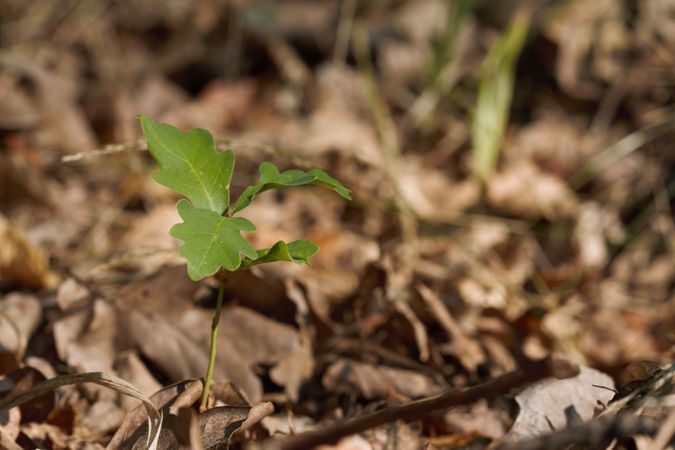
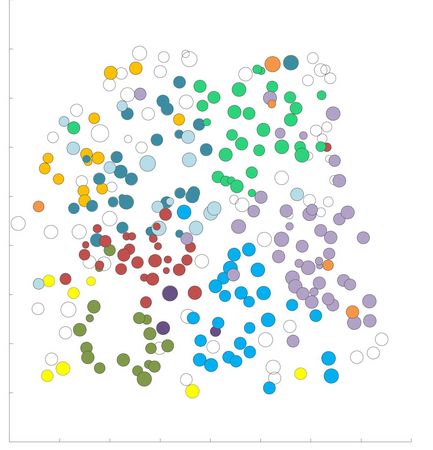
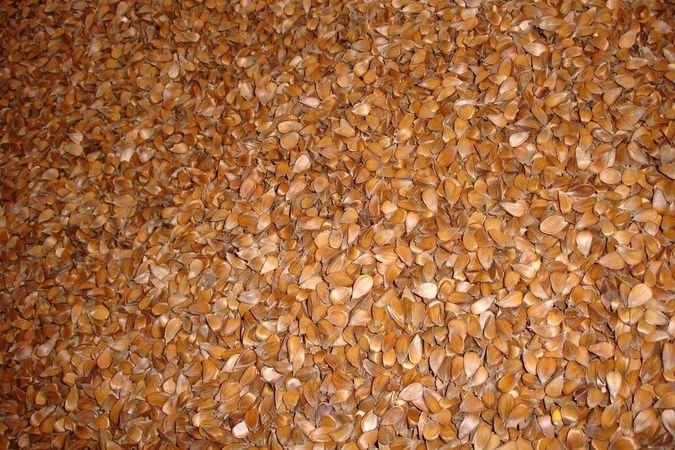
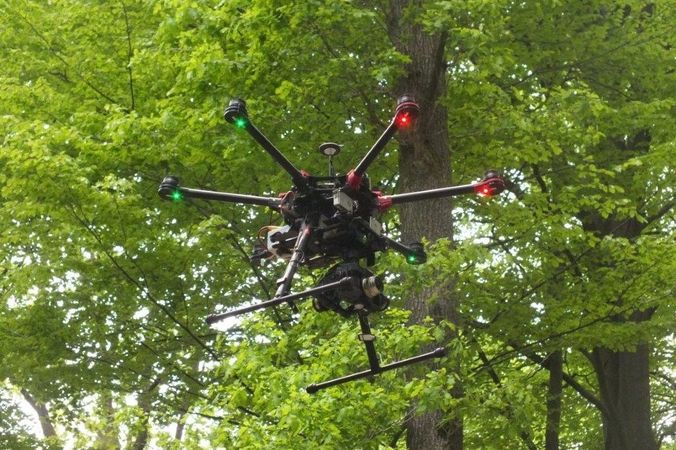
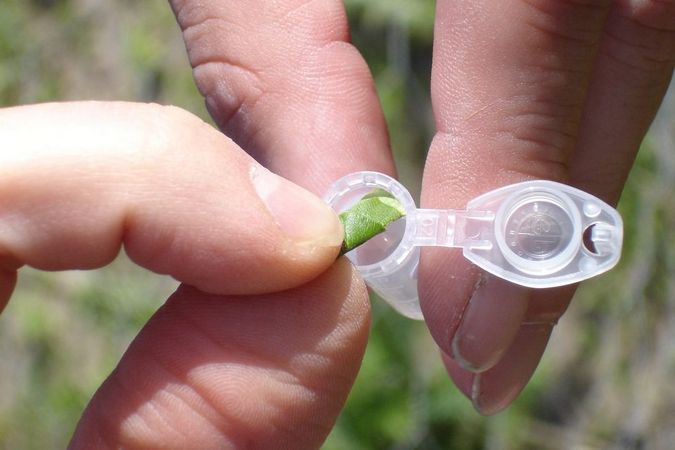
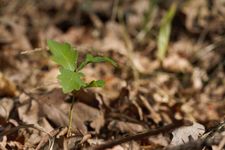
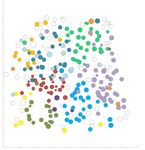
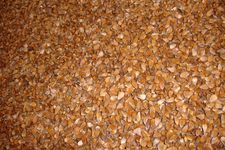
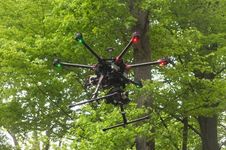
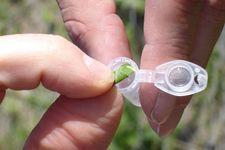
![[Translate to English:] Logo des Bundesministerium für Ernährung und Landwirtschaft](/media/allgemein/logos/BMEL_Logo.svg)